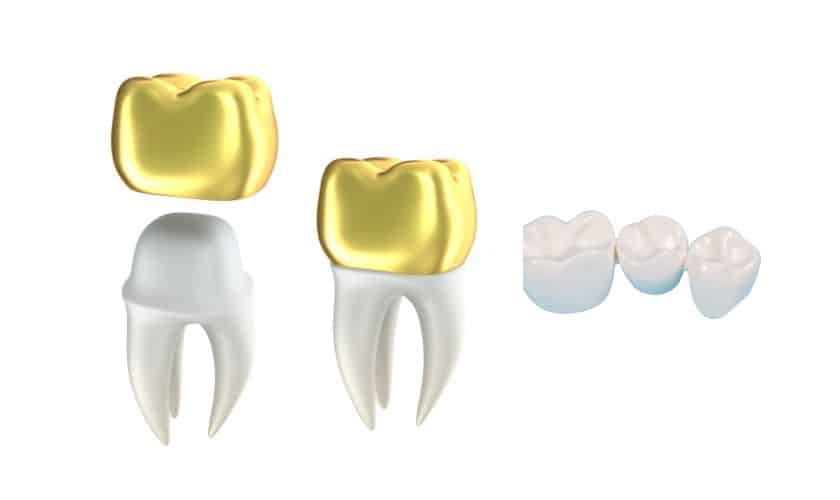Dental crowns play a crucial role in restoring damaged or weakened teeth, providing strength, durability, and aesthetic enhancement. But have you ever wondered how these custom-made dental restorations are prepared? In this comprehensive guide, we’ll delve into the intricate process of creating dental crowns, from initial assessment to final placement.
Understanding Dental Crowns
Before delving into the preparation process, let’s first understand what dental crowns are and why they’re used. Dental crowns, also known as caps, are prosthetic devices designed to cover the entire visible portion of a damaged or decayed tooth. They serve multiple purposes, including strengthening weak teeth, restoring shape and function, improving appearance, and protecting the underlying tooth structure.
The Preparation Process
- Initial Assessment: The journey to a dental crown typically begins with a comprehensive dental examination and assessment. Your dentist will evaluate the condition of the affected tooth, assess the extent of damage or decay, and determine whether a dental crown is the most suitable treatment option.
- Tooth Preparation: Once the decision to proceed with a dental crown is made, the next step involves tooth preparation. This process entails the removal of a thin layer of enamel from the tooth’s surface to create space for the crown. The amount of enamel removed depends on the type of crown and the specific needs of the patient.
- Impression Taking: After tooth preparation, your dentist will take an impression or mold of the prepared tooth and surrounding teeth. This impression serves as a precise replica of your tooth and provides vital information for crafting a custom-fitted dental crown. Traditionally, dental impressions were made using putty-like materials, but modern digital technology allows for more accurate and efficient digital impressions.
- Shade Selection: Before proceeding with crown fabrication, the shade of the dental crown is carefully selected to match the natural color of your teeth. Your dentist will use shade guides to determine the most appropriate color, ensuring a seamless and natural-looking restoration that blends harmoniously with your smile.
- Crown Fabrication: With the impressions and shade selection complete, the dental crown fabrication process begins. Depending on the chosen material (e.g., porcelain, ceramic, metal alloy, or a combination of materials), the fabrication method may vary. In traditional dental laboratories, skilled technicians meticulously craft the crown by hand using the impression as a guide. Alternatively, advanced computer-aided design and manufacturing (CAD/CAM) technology can be utilized for precise and efficient crown fabrication.
- Temporary Crown Placement: While the permanent crown is being fabricated, a temporary crown may be placed over the prepared tooth to protect it and maintain function and aesthetics. Temporary crowns are usually made from acrylic or composite materials and are designed to be worn temporarily until the permanent crown is ready for placement.
- Crown Fitting and Adjustments: Once the permanent crown is fabricated, it is carefully evaluated for fit, function, and aesthetics. Your dentist will ensure that the crown fits snugly over the prepared tooth, aligns properly with adjacent teeth, and achieves the desired bite alignment. Any necessary adjustments are made to ensure optimal comfort and functionality.
- Cementation: After satisfactory fitting and adjustments, the permanent crown is cemented or bonded onto the prepared tooth using dental adhesive. The crown is securely attached to the tooth, providing long-term stability and durability.
- Final Polishing: The final step in the crown preparation process involves polishing the crown to achieve a smooth and lustrous surface. This helps enhance the crown’s appearance, minimize plaque accumulation, and promote long-term oral health.
Final Thought
The preparation process for dental crowns involves a series of meticulous steps, from initial assessment to final placement. By following this comprehensive process, dentists can create custom-fitted crowns that restore function, aesthetics, and confidence to patients’ smiles. If you’re considering dental crowns as a treatment option, consult with your dentist to determine the most appropriate approach for your individual needs and preferences.



